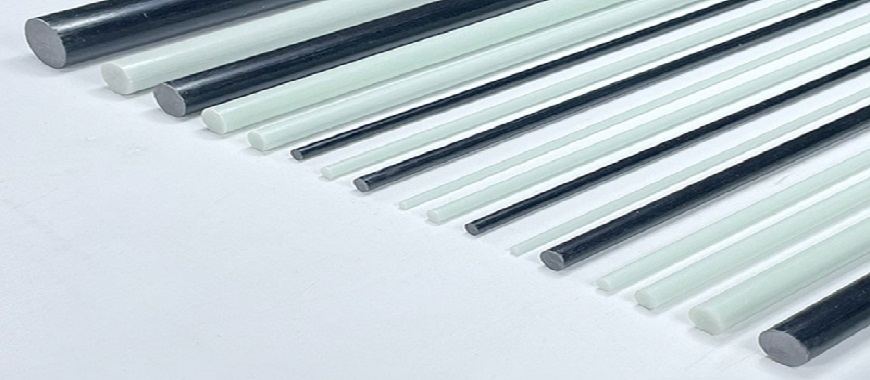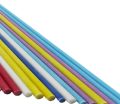
Fiberglass fly rods hold a special place for many anglers, cherished for their durability and smooth casting action. Over time, wear and tear may affect their performance, but with the right approach, you can refurbish a fly rod fiberglass and bring it back to life. Restoring these rods allows you to preserve their unique qualities while extending their use for years. Before beginning the refurbishment process, it’s crucial to assess the condition of the rod. Checking for cracks, crazing, or splinters ensures that the rod is still safe to use. Proper care and attention during restoration can revitalize your fiberglass rods, improving both its appearance and performance.
Assessing the Condition of the Rod to Refurbish a Fly Rod Fiberglass
Before you begin to refurbish a fly rod fiberglass, it is essential to assess its current condition. This step ensures that the rod is safe to use and worth restoring.
Inspect for “Crazing” and Cracks
Crazing refers to small, hairline cracks that appear on the rod’s surface. These cracks can compromise the structural integrity of the rod over time. When you refurbish a fly rod fiberglass, carefully inspect the blank for crazing or deeper cracks. If the cracks are minor, the rod may still be usable. However, extensive crazing or visible cracks could weaken the rod, making it prone to breaking under stress. In such cases, it’s better to display the rod rather than risk using it.
Dealing with Fragile Blanks
If the blank shows signs of splintering or fragility, proceed with caution. Splinters indicate that the fiberglass may be deteriorating. When refurbishing a fly rod fiberglass, gently run your hands along the blank to feel for rough or fragile spots. If significant splintering is present, the rod’s performance might be compromised. In these cases, reinforcing the blank or leaving it as a decorative piece may be the safest option.
Fiberglass Sheet Rate for Industrial Applications Explained
Removing the Old Finish to Refurbish a Fly Rod Fiberglass
Once the rod has been inspected and is deemed safe, the next step in the process to refurbish a fly rod fiberglass is removing the old finish. This is a crucial stage because proper removal sets the foundation for a smooth, polished restoration.
Tools and Techniques for Finish Removal
To successfully refurbish a fly rod fiberglass, you’ll need a few essential tools. A razor blade is an excellent tool for carefully scraping off the old finish. However, extreme care is required to avoid damaging the blank underneath. Hold the razor at a shallow angle, working slowly and steadily to peel away the existing coating. It is important not to rush this process to ensure that the blank remains intact.
Revealing the Natural Blank Color
As you continue to remove the old finish, you will begin to reveal the rod’s natural blank color. Many old fiberglass rods have a painted or coated finish, hiding the true appearance of the material. During this phase of refurbishing a fly rod fiberglass, you may notice the blank’s natural hues coming through. These colors can range from light amber to darker tones, adding a unique aesthetic to your restored rod. Once the finish is fully removed, you’ll have a clean, smooth surface, ready for the next step in the restoration process.
Applying a New Finish to Refurbish a Fly Rod Fiberglass
After removing the old finish, the next step in the process to refurbish a fly rod fiberglass is applying a new one. This step not only enhances the rod’s aesthetics but also protects it from future wear and tear.
Choosing a Finish
When deciding on the right finish to refurbish a fly rod fiberglass, automotive urethane clear finishes are highly recommended. These finishes provide a durable, glossy layer that both protects and enhances the rod’s appearance. For those seeking a more personalized touch, tinting the finish is also an option. This allows you to customize the color, adding an extra level of uniqueness to your refurbished rod.
Step-by-Step Process
To achieve a smooth, even coat when you refurbish a fly rod fiberglass, proper application techniques are essential.
- First, hang the rod vertically to ensure that gravity works in your favor, preventing drips or uneven coverage.
- Next, dip a nylon stocking into the finish, then wrap it around the rod blank.
- Slowly and steadily, apply the finish in a continuous downward motion. This ensures that the coating spreads evenly across the entire surface, leaving no streaks or bubbles.
- Repeat this process if necessary to achieve a flawless, professional-grade finish.
Top Features of the Best Fiberglass Street Rod Body for Builders
Cleaning the Rod to Refurbish a Fly Rod Fiberglass
Before applying the final touches to refurbish a fly rod fiberglass, thorough cleaning is a critical step. Properly cleaning the rod ensures that the surface is free from dirt and grime, allowing for a polished, professional finish.
Cleaning Methods
When you refurbish a fly rod fiberglass, one effective method for cleaning the blank, reel seat, and guides is using a foaming bathroom cleaner. These cleaners are designed to lift and remove dirt, making them ideal for this task.
- Begin by spraying a small amount of foaming cleaner onto the rod, focusing on the areas that accumulate the most grime, such as the reel seat and the guides. Allow the cleaner to sit for a few moments, giving it time to break down any residue.
- Next, gently wipe the rod using a soft cloth or brush, making sure to clean every surface. This will remove any loosened dirt without damaging the rod. Afterward, rinse the rod with warm water to ensure that no cleaner remains. It is important to dry the rod completely before proceeding to the next stage in the refurbishment process.
- A more delicate approach involves using dishwashing soap and a soft-bristled toothbrush for scrubbing difficult areas. This technique is particularly useful for restoring old rods without causing any harm to sensitive areas like the wraps or guides. Whether you choose foaming cleaner or soap, this step is crucial to successfully refurbish a fly rod fiberglass.
Cork Handle Maintenance to Refurbish a Fly Rod Fiberglass
As you continue the process to refurbish a fly rod fiberglass, maintaining the cork handle is an essential step. Over time, the cork can become dirty, dry, or cracked, affecting both the comfort and appearance of the rod.
How to Clean and Recondition the Cork
- First, to refurbish a fly rod fiberglass effectively, begin by cleaning the cork handle using warm soapy water. Use a soft cloth or sponge to gently scrub the surface, removing dirt and grime without causing damage. For stubborn stains or ingrained dirt, a worn toothbrush can provide additional cleaning power. After cleaning, rinse thoroughly and allow the handle to dry completely.
- Once clean, gentle sanding can help restore the cork’s smoothness. Use fine-grit sandpaper to lightly sand the surface, removing rough spots and making the cork feel new again. Sand carefully to avoid over-thinning the cork, which could weaken its structure.
- Next, applying a cork sealer is highly recommended. This sealer protects the cork from moisture and further deterioration, ensuring its longevity. The sealer also helps maintain the handle’s natural grip, an important factor in the rod’s overall performance.
- To revive dry or severely worn cork, more intensive treatment may be needed. One method is applying mink oil, which rejuvenates the cork and restores its elasticity. Alternatively, you can wrap the cork handle with a warm, wet towel for a few hours. This technique helps swell and smooth the cork, providing a temporary remedy for deep ridges or cracks.
- By following these steps, you’ll successfully refurbish a fly rod fiberglass and restore its cork handle to its former glory, ensuring comfort and durability for future use.
Top Features of the Best Fiberglass Street Rod Body
Safety Tips: Dealing with Fiberglass Splinters While You Refurbish a Fly Rod Fiberglass
During the process to refurbish a fly rod fiberglass, handling the material carefully is crucial. Fiberglass splinters pose a significant risk, and understanding how to manage them safely will protect you from injury.
The Danger of Fiberglass Splinters
Fiberglass splinters are not just an annoyance; they can be dangerous. These tiny, sharp strands can easily penetrate the skin, causing significant discomfort. Due to the linear nature of fiberglass, splinters can enter deeply, sometimes making them difficult and painful to remove. When you refurbish a fly rod fiberglass, you may encounter loose fibers or splinters that could lead to persistent pain or even infection if not properly addressed.
Removal Techniques
Fortunately, removing fiberglass splinters is relatively simple if you use the right techniques. One effective method is using white adhesive tape. First, wrap the tape around the affected area, ensuring that it sticks to the skin where the splinters are embedded. Leave the tape on for a few hours, or even a day if necessary. When you peel the tape off, the splinters should come out with it, sparing you the discomfort of tweezers or needles.
In addition to this method, always wear gloves when working with fiberglass to prevent splinters in the first place. This precautionary measure will make your journey to refurbish a fly rod fiberglass much safer and more comfortable.
Polishing and Waxing to Refurbish a Fly Rod Fiberglassd Waxing
As the final step to refurbish a fly rod fiberglass, polishing and waxing the rod is crucial for enhancing both its appearance and durability. This process ensures a smooth, glossy finish that protects the rod from future wear and tear.
Polishing the Rod
Once the new finish has dried, it’s time to polish the rod to achieve a high-gloss sheen. This wax contains carnauba, which not only adds a brilliant shine but also creates a protective layer over the fiberglass. Apply the wax in small amounts using a soft cloth, working in circular motions to ensure even coverage.
After applying the wax, allow it to sit for a few minutes to bond with the rod’s surface. Then, using a clean, dry cloth, gently buff the rod to bring out the shine. This step will enhance the finish and give the rod a sleek, professional look.
For additional protection, you may also apply a second coat of wax. This extra layer helps to seal the finish, ensuring that your newly refurbished rod is resistant to moisture and UV damage. By following these polishing and waxing steps, you can effectively refurbish a fly rod fiberglass, giving it the perfect blend of aesthetics and longevity.
The Reward of Refurbishing
Successfully completing the process to refurbish a fly rod fiberglass is not only satisfying but also rewarding. Throughout the restoration, from assessing the rod’s condition to applying a new finish and polishing it to perfection, each step plays a vital role in reviving the rod. By taking the time to restore your fiberglass rod, you preserve its unique qualities and ensure it remains a functional piece of equipment for years to come.
Moreover, the process of refurbishing is an opportunity to give an old, possibly neglected rod a new lease on life. Whether you intend to use the rod for fishing or display it as part of a cherished collection, the effort invested in refurbishing a fly rod fiberglass is well worth it. Bringing the rod back to its original beauty not only enhances its value but also offers a sense of accomplishment.
Ultimately, taking the time to refurbish a fly rod fiberglass allows you to experience the joy of craftsmanship and restoration. It’s a rewarding journey that can transform an old rod into a prized possession, ready for action or admiration.
FAQs about Refurbish a Fly Rod Fiberglass
To restore an old fiberglass fly rod, start by assessing its condition for cracks or splinters. Carefully remove the old finish using a razor blade to reveal the natural color of the blank. Apply a new finish, such as automotive urethane, for a glossy and protective layer. Be sure to clean the rod thoroughly before re-finishing, and don’t forget to polish the blank afterward for extra shine. Finally, maintain the cork handle by cleaning it with warm soapy water and applying a cork sealer. A properly restored rod will look and perform like new.
Cleaning old fiberglass fishing rods requires gentle yet effective methods. Start by using a foaming bathroom cleaner to remove dirt and grime from the blank, reel seat, and guides. Gently scrub with a soft cloth or worn toothbrush to avoid scratching the surface. Afterward, rinse with warm water and let the rod air dry. For extra care, use a mild dish soap for particularly stubborn dirt. Additionally, polishing the rod with carnauba-based wax will help restore its shine and protect the finish. Regular cleaning ensures the longevity of your rod.
Fixing a broken fiberglass fishing rod typically involves either splicing or replacing the damaged section. First, assess whether the break is near the tip or in the middle of the rod. For tip breaks, a replacement tip-top guide can usually be applied. In the case of mid-rod breaks, a more complex splice repair may be needed. Using fiberglass repair kits, you can reinforce the break with a splint or additional fiberglass layers. Make sure to sand the repaired area and apply a fresh coat of finish to restore the rod’s appearance and durability.
Yes, fiberglass fly rods are highly valued by anglers for their durability, smooth casting action, and flexibility. They are particularly suitable for small stream fishing, offering a slower casting rhythm that many anglers appreciate. Additionally, fiberglass rods are often more forgiving, making them great for beginners. Although they may lack the speed and stiffness of graphite rods, their classic feel and reliability make them worth the investment, especially for those seeking a traditional fly fishing experience. A well-maintained fiberglass fly rod can last for decades, adding to its value.

As the editor of GangLong Fiberglass, I have years of experience and in-depth research, focusing on cable tray products, fiberglass solutions, and grille systems. I incorporate years of industry insights and practical experience into every content, committed to promoting the progress of the industry. At GangLong Fiberglass, my commitment is reflected in every product, from innovative cable trays to durable fiberglass solutions and sturdy grille systems. As an authoritative voice in the industry, my goal is to provide valuable information to professionals and businesses and promote forward-looking solutions.


